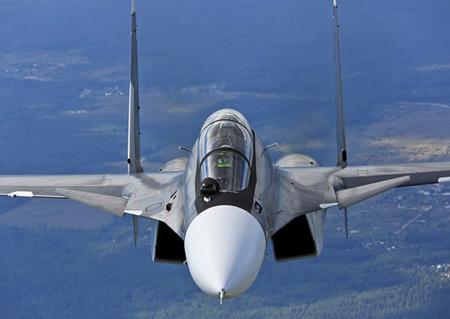Putin himself, last week, announced the entry into service of two Arctic war brigades in addition to the air force and air defense units. The deployment of troops in the Arctic began in December last year with the dispatch of electronic warfare units while at the city of Vortuka, north of the polar circle, work began on the construction of the radar network that took place. will finish by 2018.
But today is also a very important day for the Russian air force. The Ministry of Defense, in fact, has traced the year's balance sheet which has now been almost completed, defining the objectives for the 2015.
From Moscow mention all the exercises performed in the 2015 such as the "Vostok-2014", "Selenge 2014", "Indestructible Brotherhood-2014" and "Aviaindra 2014".
A particular passage, however, deserves attention. As is known, communications between the West and Russia after the Ukraine affair were interrupted. The flights, for example, of Russian bombers along the European borders were no longer communicated by Moscow so much as to push NATO, a few weeks ago, to issue a warning of danger for civil flights for "unknown and unauthorized air traffic ". These flights have now been officially confirmed by Russia in great detail.
In order to respond to the challenges of strategic deterrence - write the Ministry of Defense - our long-range bombers have performed more than 50 flights over the waters of the North and in Norway, the Mediterranean, the Baltic and the Black Sea. Our formations - they add - they also pushed into the Atlantic and Pacific oceans and into the Arctic glacial sea.
To improve efficiency and solve defense problems - explain Moscow - the Air Force has received more than 60 air defense systems such as the S-400 and mobile low-altitude detection systems such as the "Sky-M" radar .
Finally, in the 2015, the Russian Air Force will receive more than 150 aircraft and helicopters. According to forecasts, the departments will receive Sukhoi Su-34 bombers, Su-30 multi-role fighters and Su-35S combat aircraft, Yakovlev Yak-130 advanced trainers and Ilyushin Il-76MD-90 transport aircraft.
The helicopter component with Mil Mi-28N and Kamov Ka-52 attack helicopters will also be strengthened (the latter was initially designed as an exclusive aircraft to support Specnaz), for Mi-8AMTSh transport and for Mi-35 assault ( evolution of the Mil-Mi 24).
Franco Iacch
(photo: MoD Russian Federation)












